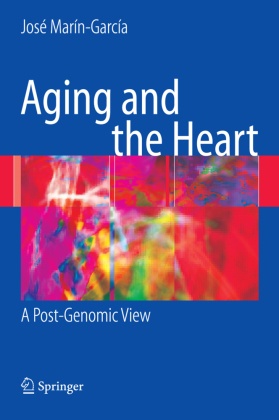
Aging and the Heart - A Post-Genomic View
| Verlag | Springer |
| Auflage | 2007 |
| Seiten | 568 |
| Format | 17,9 x 4,8 x 25,9 cm |
| Gewicht | 1268 g |
| Artikeltyp | Englisches Buch |
| EAN | 9780387740713 |
| Bestell-Nr | 38774071EA |
Cardiac aging, like aging in general, is a complex process involving numerous cellular and molecular changes, which along the way contribute to the expression of the multiple phenotypes of aging, "the different faces" of cardiac aging. Several plausible theories have been considered to explain aging, e.g., evolution, free radical, somatic mutation, etc; and at this time it is most likely that these different theories are intertwined with each other without a definitive "winner", reflecting a mixture of genetic and epigenetic elements found in most aged individuals with cardiovascular defects. The demonstration in numerous animal models of the dramatic alterations in life-span achieved by gene engineering or dietary modifications, such as caloric restriction, further underscores the interplay of both genetic and environmental factors involved in aging, as well as acting through molecular and signaling pathways operative in the heart and the vasculature.
Aging and decreas ing heart function occurring together has been amply documented, and our knowledge of age associated cardiac pathologies has outpaced our understanding of the basic mechanisms underlying these processes. At present, genomics, proteomics and recombinant DNA techniques are increasingly applied to the study of cardiac cell structure and function. Their role in aging, in general, and in the aging heart, in particular, will finally be unveiled. With the availability of the Human Genome Project, and an ever increasing number of animal models and new and exciting molecular technologies, the unraveling of the underlying basic mechanisms of cardiac aging have already begun. In this book, the genetic and molecular basis of cardiovascular aging will be discussed and a comprehensive assessment of the bioenergetics changes occurring in human and animal models of cardiac aging, current diagnostic and future therapeutic modalities will be presented.
Inhaltsverzeichnis:
to a Post-Genomic View of Aging and the Aging Heart.- Post-Genomic View of Aging: Definitions, Theories and Observations.- Overview of Cardiovascular Aging.- Methodologies, Cardiac Phenotypes and Adaptation.- Molecular and Cellular Methodologies: A Primer.- Molecular and Cellular Phenotypes of Cardiovascular Aging.- Aging of the Cardiovasculature and Related Systems.- Aging of the Vasculature and Related Systems.- Aging and the Cardiovascular-Related Systems.- Cardiovascular Diseases in Aging.- Cardiomyopathy and Heart Failure in Aging.- Atherosclerosis, Hypertension and Aging.- Metabolic Syndrome, Diabetes and Cardiometabolic Risks in Aging.- Gender and Cardiovascular Diseases in Aging.- Cardiac Dysrhythmias and Channelopathies in Aging.- Genetics.- Genetics of Life Span: Lessons from Model Organisms.- Profiling the Aging Cardiovascular System: Transcriptional, Proteomic, SNPs, Gene Mapping and Epigenetics Analysis.- Therapies.- Translational Research: Gene, Pharmacogenomics and Cell-Based Therapy in the Aging Heart.- Nutrition and Exercise in Cardiovascular Aging: Metabolic and Pharmacological Interventions.- The Future of Aging Research.- Aging and the Frontier Ahead.
Rezension:
From the reviews:
"A comprehensive and authoritative book about cardiac senescence in the postgenomic period. ... The book is extensively referenced and thoroughly researched. The bibliographies provided after each chapter are exhaustive, and the end of the book includes an ample glossary section defining the plethora of acronyms used throughout." (M. Saleem Seyal, JAMA, Vol. 300 (9), 2008)
"This is a comprehensive review of basic science research in the field of aging in the context of clinically relevant cardiovascular disorders. ... It is intended for both basic scientists and clinicians with ... some experience in biochemistry, molecular and cell biology, and genetics who are interested in cardiovascular aging. ... The best features of this book are its comprehensiveness, with its numerous sources of research, and its integration of basic science research into relevant clinical topics." (Arindam Banerjee, Doody's Review Service, January, 2010)
